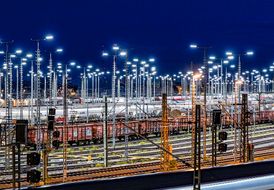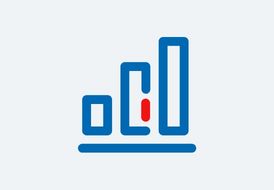Digitalization and innovation
DB Cargo is positioning itself on the market with, among other things, the following measures to drive digitalization and innovation:
- DB Cargo is developing the Munich-North marshaling yard into Germany’s first digital freight yard. It aims to achieve largely automated train dispatching. This will increase the capacity of the marshaling yard by up to 40%. In future, freight trains will be able to depart more quickly, flexibly and frequently.
- In 2020, DB Cargo and the rail freight car lessor VTG constructed a modular and multi-functional carrier car that offers new opportunities for vehicle design. This is the only one of its kind in Europe. The aim is to adapt the cars to customer needs more quickly and in a more tailored way, thereby achieving greater flexibility. The freight car system is capable of single wagon transport and was fully approved by DB Cargo in June 2021. Since then, DB Cargo has been driving the market launch of the carrier car with various containers and superstructures in four industries, and will be investing in the innovative freight car system in its new and replacement purchases. The aim is to offer tailored logistics solutions for customers in the transport and logistics industry. The market launch of the first pre-production series for various types of goods is partly funded by the BMDV program “Future of Rail Freight Transport.”
- Digital automatic coupling (DAC) is one of the most important innovations for a green transport transition. The research project DAC4EU , which has received€ 13 million in funding from the BMDV, has been running since June 2020. The decision to use the Scharfenberg design as a standard for coupling in freight transport in Europe was made by the European DAC Delivery Program (EDDP) in September 2021. Thanks to the ongoing process tests, the DAC demonstration train is making significant headway in the second phase of the project: in shunting operations under realistic conditions and on various line runs. The introduction of DAC, combined with digitalization
and workflow automation, will lead to capacity increases of up to 15% in the existing rail network. The most important conditions required for this are a uniform European standard, viable funding and financing for the introduction of the DAC, and intensive planning and long-term preparation for the refitting of freight cars and traction units in Europe without major impacts for customers.



